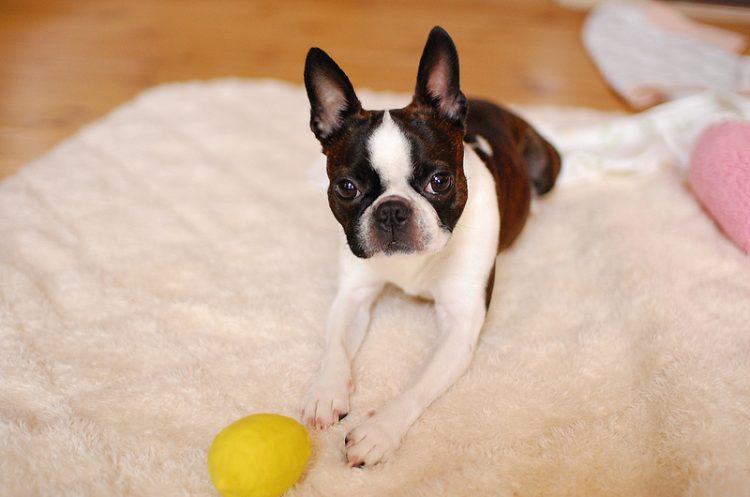
Mast cell tumors are a vast topic because of their variable appearance and unpredictable nature. So, drawing in a deep breath, let’s start at the beginning.
Mast cell tumors most commonly occur on the skin — and now things start to get complicated.
The problem with these tumors is that they are the “great pretenders.” A dog may develop a simple, raised pink lump on his skin that has all the physical characteristics of being harmless, and yet when it is removed and analyzed, it turns out to be a highly aggressive cancer.
And not all mast cell tumors are the same. Indeed, they are graded 1 to 3 in terms of nastiness (with 1 being unlikely to cause future problems and 3 being highly worrying).
Many mast cell tumors fall into the middle group (2), which have a foot in either camp. The problem here is making a decision of whether to put the pet through radical surgery or potentially harmful chemotherapy on the basis of what “might happen.”
Unfortunately, some breeds are more likely to get mast cell tumors, including Golden Retrievers, Boxers, the bull breeds and Boston Terriers.
Symptoms
Mast cell tumors are most commonly skin lumps, and any lump on the dog’s skin (or elsewhere) should be taken seriously.
Frustratingly, mast cell tumors can mimic more harmless bumps. As a rule of thumb, skin lumps that are round, grow slowly and can be lifted away from the tissue beneath are less likely to be nasty.
But mast cell tumors ignore that rule. They can pop up and sit there, all innocent-looking as a button-like raised mass that doesn’t change from one month to the next. And yet if the lump is really a mast cell tumor, it is a ticking time bomb, waiting and choosing its moment to send cancer cells off to other parts of the body.
Some mast cell tumors behave aggressively from the start, which makes straightforward decision making (if ever there were such a thing when dealing with mast cell tumors) a bit easier. These lumps grow quickly, look inflamed and angry and may even be itchy or irritating to the dog.

Causes
Mast cell tumors arise spontaneously, and there are no known risk factors other than breed, which makes it seem likely that there is a genetic component to their growth.
Diagnosis
Sometimes a fine needle aspirate (sucking up a few cells through a hypodermic needle) can show the presence of mast cells in a lump; however, relying on this method alone may cause some serious lumps to be missed.
The gold standard is to remove any skin lumps and send them away for analysis. However, in true confusing style, on straightforward histology there may not be enough markers present to accurately predict the tumor’s grade.
Further tests may be necessary, of which c-kit or the KI67 are the up-and-coming diagnostic tests of choice. But even these tests only offer a probability of spread rather than a definitive answer for certain mast cell tumors.
Treatment
The treatment of choice for the majority of mast cell tumors is surgical removal with wide margins.
The aim of surgery is to completely remove the tumor and any trace of it in the surrounding tissue. However, this can be quite difficult in areas where skin is tight, such as in a paw. In these cases, if a grade 3 tumor is identified, then radical surgery, such as limb amputation, may be lifesaving under some circumstances.
One encouraging development in mast cell tumor treatment is that new drugs are available that inhibit enzymes within the lumps, which stop them from growing.
When a dog has lots of mast cell tumors or surgery isn’t an option, there are now medical treatments that are of benefit in around 70% of these patients. A veterinary oncologist is best placed to discuss all the treatment options available.
Prevention
There is no known trigger factor.
If a dog has developed a mast cell tumor, then surgical removal is the best option to avoid recurrence; however, some dogs do pop up “de novo” or new mast cells that are not a result of spread from the first lump.
References
- “Evaluation of risk and clinical outcome of mast cell tumors in pug dogs.” McNeil, Prink & O’Brien. Veterinary and Comparative Oncology, 4: 2–8.
- “Effects of stage and number of tumors on prognosis of dogs with cutaneous mast cell tumors.” Murphy, Sparkes, Blunden, Brearley & Smith. Vet Rec, 158: 28–291.
 This pet health content was written by a veterinarian, Dr. Pippa Elliott, BVMS, MRCVS. It was last reviewed Oct. 11, 2018.
This pet health content was written by a veterinarian, Dr. Pippa Elliott, BVMS, MRCVS. It was last reviewed Oct. 11, 2018. 

